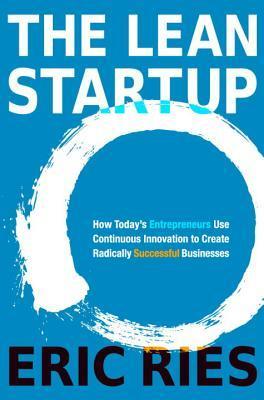More on this book
Community
Kindle Notes & Highlights
by
Eric Ries
Read between
October 13, 2018 - September 5, 2019
The goal of a startup is to figure out the right thing to build—the thing customers want and will pay for—as quickly as possible. In other words, the Lean Startup is a new way of looking at the development of innovative new products that emphasizes fast iteration and customer insight, a huge vision, and great ambition, all at the same time.
Lean thinking defines value as providing benefit to the customer; anything else is waste.
We adopted the view that our job was to find a synthesis between our vision and what customers would accept; it wasn’t to capitulate to what customers thought they wanted or to tell customers what they ought to want.
It is also the right way to think about productivity in a startup: not in terms of how much stuff we are building but in terms of how much validated learning we’re getting for our efforts.
The value hypothesis tests whether a product or service really delivers value to customers once they are using it.
For the growth hypothesis, which tests how new customers will discover a product or service, we can do a similar analysis.
Remember, if we’re building something that nobody wants, it doesn’t much matter if we’re doing it on time and on budget.
What differentiates the success stories from the failures is that the successful entrepreneurs had the foresight, the ability, and the tools to discover which parts of their plans were working brilliantly and which were misguided, and adapt their strategies accordingly.
As you consider building your own minimum viable product, let this simple rule suffice: remove any feature, process, or effort that does not contribute directly to the learning you seek.
The reason to build a new team to pursue an idea is that you believe you can accelerate through the Build-Measure-Learn feedback loop faster than anyone else can. If that’s true, it makes no difference what the competition knows.
The true measure of runway is how many pivots a startup has left: the number of opportunities it has to make a fundamental change to its business strategy.
I recommend that every startup have a regular “pivot or persevere” meeting.
but rather validated learning about how to build a sustainable business. What products do customers really want? How will our business grow? Who is our customer? Which customers should we listen to and which should we ignore? These are the questions that need answering as quickly as possible to maximize a startup’s chances of success. That is what creates value for a startup.
Lean Startups practice just-in-time scalability, conducting product experiments without making massive up-front investments in planning and design.
The ability to learn faster from customers is the essential competitive advantage that startups must possess.
Sustainable growth is characterized by one simple rule: New customers come from the actions of past customers.
Companies of any size can suffer from this perpetual affliction. They need to manage a portfolio of activities, simultaneously tuning their engine of growth and developing new sources of growth for when that engine inevitably runs its course.
For engineers trained in traditional development methods, this was often frightening.


